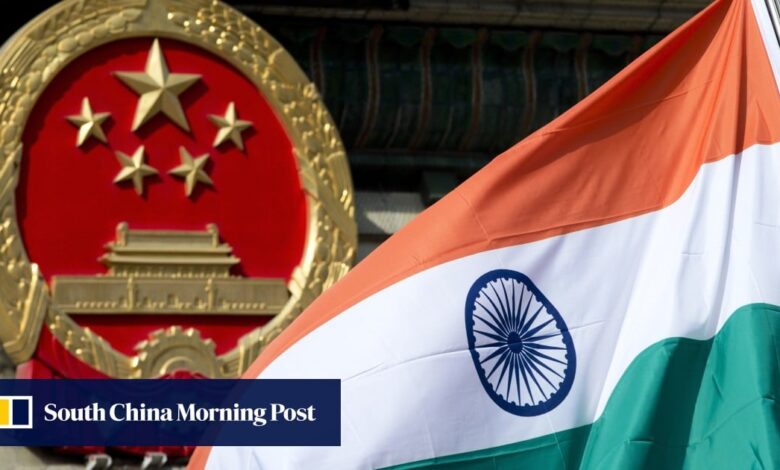What’s the state of China-India trade and investment?

Indian businessmen have flagged “unforeseen challenges” to doing business with China, even as bilateral trade has remained strong.
Speaking to the post, the investors touched on a variety of uncertainties, including a lack of direct flights, the stringent regulatory environment, cutthroat competition with local players, geopolitical frictions, and China’s economic slowdown.
Particularly, “Indian businesses are concerned about the potential of sudden political decisions that could impact their operations”, said Deepak Khanna, vice-president for the Asia-Pacific region at Indian home appliances company Usha International, which has operations in the southern Chinese city of Guangzhou.
While acknowledging “weak sentiment among Indian businessmen regarding investment in the Chinese market and vice versa”, Khanna warned that “the associated risks and challenges cannot be overlooked”.
“Understanding the local culture, staying updated with regulatory changes, and being prepared for unforeseen challenges are crucial for success,” he added.
Gulshan Sachdeva, a professor of international studies at Jawaharlal Nehru University, said that political tensions between the two nations and the broader geopolitical climate “is not very favourable” for new Indian investment deals with China.
“As long as border tensions persist, anti-China sentiment and rhetoric are likely to prevail in domestic politics,” he added. “India also hopes to leverage the hardened Western stance against China to attract investments.”
India’s external affairs minister, Subrahmanyam Jaishankar, said at an annual business summit in May that companies should be gradually reducing their dependence on Chinese imports and shifting towards local procurements, according to a report by Mint, the country’s business and financial daily newspaper.
Connections between the countries were once positive, information from aviation analytics firm Cirium showed, as direct India-China flights reached the peak in December 2019 with 539 scheduled flights being operated by airlines such as IndiGo, Air India, China Southern, China Eastern, Air China and Shandong Airlines.
“Flights were halted four months later as the pandemic escalated,” said Alberto Vettoretti, managing partner at consulting firm Dezan Shira & Associates. “Apart from a few Covid repatriation flights, they have not resumed.”
Vettoretti noted that India does not have much interest in a resumption of direct flights unless tensions at the border are eased.
“China-bound travellers must change planes either in Hong Kong, which has a separate aviation regulator and border controls from mainland China, or in hubs like Dubai or Singapore,” he explained.
According to the most recent data on foreign direct investment in China issued by the Ministry of Commerce, India had 198 newly established enterprises in 2022 in China, slightly up from 186 in 2021.
Indian enterprises in China operate through various structures such as representative offices, wholly owned foreign enterprises, or joint ventures with Chinese companies, spanning the sectors of manufacturing and engineering, IT and software, pharmaceutical, trading, as well as banking, according to Dezan Shira & Associates.
The Indian trading community is primarily based in major port cities such as Guangzhou and Shenzhen, the consultancy added, while a large number of them stayed in Chinese warehouses and wholesale markets like Yiwu city in Zhejiang province. Others also had a presence in Shanghai and Beijing.
As an Indian expatriate living in China for the last two decades, Khanna said that it is necessary for both countries to build a stable and cooperative relationship in the “interdependent world”.
“For Indian businesses, a cautious and well-informed approach is essential to navigate the complexities of the Chinese market,” he added, citing examples such as the approval process, restrictions on foreign ownership, and concerns about the growth potential of investments in the Chinese market.
China ranks first when it comes to India’s bilateral trade, according to the figures released by the Ministry of Foreign Affairs, with two-way trade estimated at US$136.22 billion in 2023, up 1.5 per cent from a year earlier.
Stone Xie, founder of Stonetex, which focuses on the textile trade between China and India, said that Indians are “proactively” sourcing products in the Chinese market and then selling them elsewhere in the world.
“India now is a re-export spot of China,” he added.




